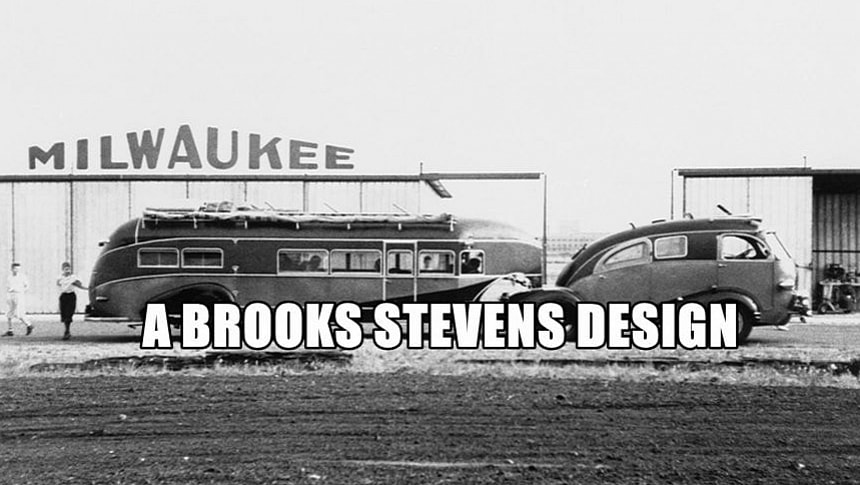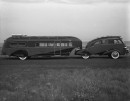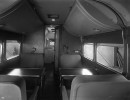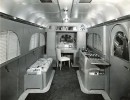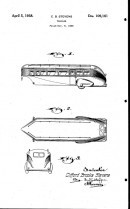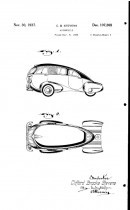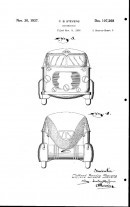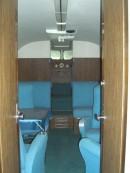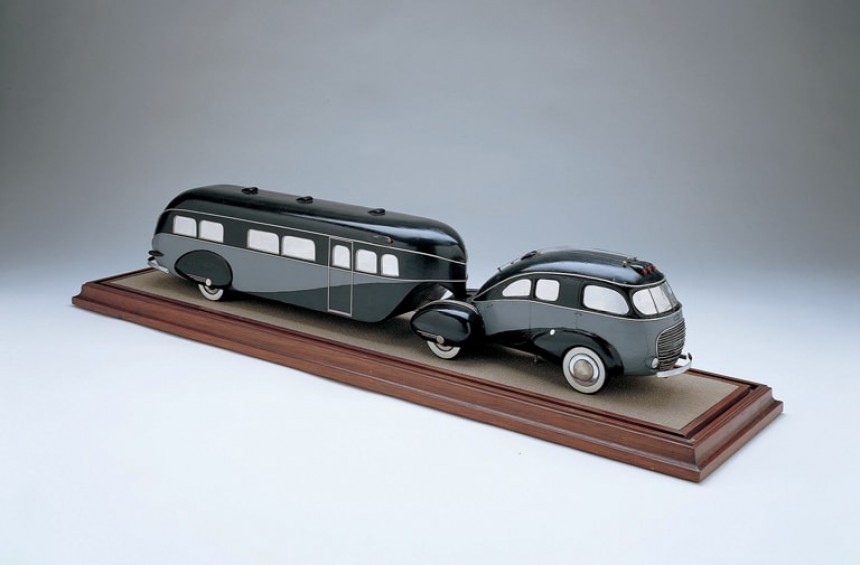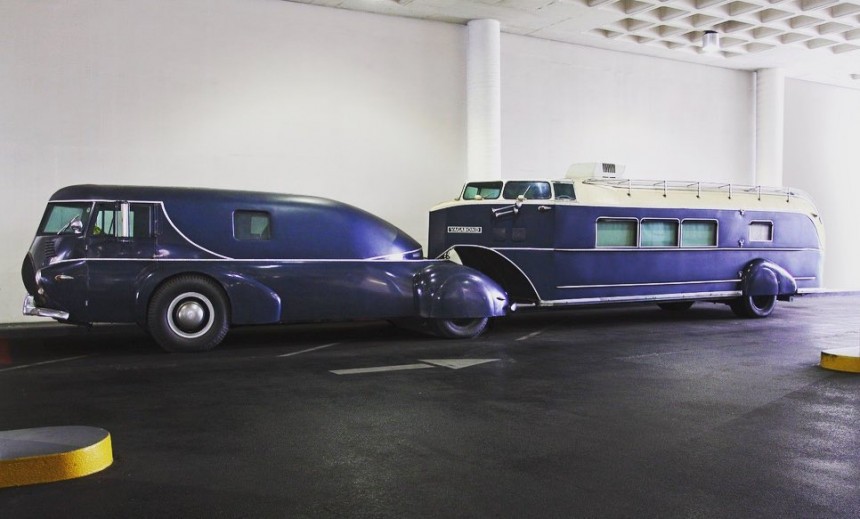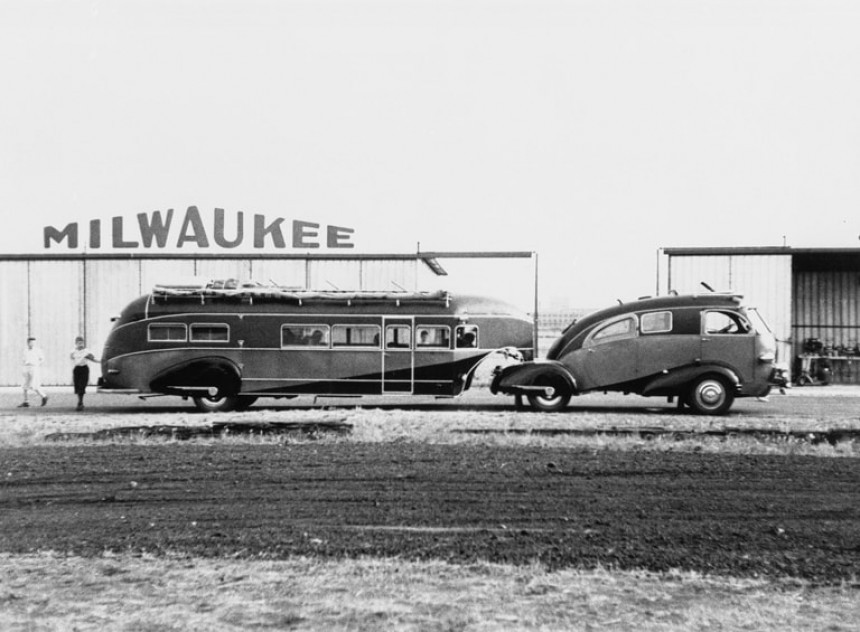When money is not an issue, you discover that there are virtually no limits to the things you can get made for you. If you also happen to cross paths with the man who would turn the phrase "planned obsolescence" into an industrial designer's mission, you know you've lucked out.
That's just a roundabout way of saying that "impossible" rings differently for the rich than it does for average-salaried folk. At the same time, if it weren't for the outlandish dreams of the world's richest gents (and ladies) and, obviously, for their money, we wouldn't have some of the world's most daring, innovative, or downright awesome designs.
For many years, starting with the early '30 and well into the '80s, Brooks Stevens was the designer who brought these dreams to life.
Brooks Stevens is a famous and highly prolific American industrial designer whose work could probably use a bit more exposure. In his long and storied career, he designed over 3,000 products as varied as they can be, from buildings to labels (and the peanut butter jar with a wider opening), outboard engines, home appliances, and automobiles. And even that's barely scratching the surface of his impressive portfolio.
As far as automotive design goes, Stevens' contribution ranges from designing the original Wienermobile for Oscar Mayer to the Jeep Wagoneer, and working for some of the biggest companies at the time, including Packard, Willys, Studebaker, Excalibur, and American Motors. He designed housecars, luxury motorhomes, and promotional vehicles, and he did custom automobiles whichever chance he got.
But you know what they say, it all starts with something.
For Stevens, his passion for design started as a child, as he was dealing with Polio and his father kept pushing him to stay occupied by drawing stuff. As a designer, it started with the creation and build of the now-iconic and permanently lost Zephyr Land Yacht, a motorhome that, while not the first of its kind, certainly set the trend for every other one that followed.
In 1935, just as he was getting started as an industrial designer, Stevens was commissioned with a large-scale and very expensive project: a luxury motorhome that would travel the country, ferrying passengers in absolute comfort. The one paying for it was playboy millionaire William Woods Plankinton, Jr., aka "Bill" Plankinton, heir to his grandfather's fortune, freelance photographer, and New York City socialite.
Plankinton wanted to travel the country with his pals and he wanted to be able to do so without having to rely on accommodation in locations where none would suit his social status. He also wanted luxury features, a large sleeping capacity, and a focus on practicality.
Stevens created for him the Zephyr Land Yacht with a custom tractor based on a cab-over-engine International Harvester chassis and a trailer that started out as a Curtis Aerocar.
Only a handful of photos of the Zephyr Land Yacht have survived, and even less documentation. But if the rig looks familiar, it's because it served as the basis of a much famous build that is still around, the 1938 Vagabond, which was made up of a REO bus and a Curtis Aerocar trailer, also for a millionaire who had seen what Stevens had done for Plankinton – and obviously wanted something similar but bigger.
Both the tractor and the trailer of the Zephyr Land Yacht featured blimp-like rounded ends for aerodynamics and cross sections with a higher clearance, allowing for standing height. Both were granted separate design patents, which Stevens took out in Plankinton's name. According to one report, the original six-cylinder engine in the tractor was swapped for a heavy-duty Ford flathead V8 about one year after completion, presumably after extensive road testing.
The new engine allowed the 35-foot (10.6-meter) rig to cruise at speeds of 75 mph (121 kph), as per the same source. It wasn't an eye-catcher just for its exterior design and size but also for its performance – and many of the rich people with whom Plankinton congregated (or hung out, as we'd say today) were impressed by it. A few of them even got started on similar projects of their own.
Even though accounts of the interior vary, it's clear that the Zephyr Land Yacht matched whatever expectations one formed from seeing it from afar. Plankinton had asked for a mobile luxury home, and that's exactly what he got: the Land Yacht had air conditioning and running water, a kitchen, a bathroom with a shower (with hot water), a living room, and an office area.
It could also sleep several people, though their exact number varies according to who you ask. Some say the trailer could sleep six, while other accounts claim it had berths for nine people. It's likely the entire capacity of the rig was of eight or nine people, including the two who could sleep in the tractor: Plankinton's driver and personal butler.
Because Plankinton loved to fish and hunt, the design also included special storage spaces for all the necessary gear.
Plankinton used the Land Yacht extensively, even during his work as a recruiter for the U.S. Army. During that period, the Land Yacht was more of a promotional vehicle in that Plankinton chose to travel with it because he knew the kind of attention it would attract.
It is believed the millionaire kept and used the Land Yacht for almost two decades, after which he gave it back to Stevens so he could put it on display in his museum. The museum shuttered in 1999, five years after the designer's death, and has since been razed to the ground. The tractor of the Zephyr Land Yacht is still around, part of a private collection in Wisconsin, but the trailer apparently "disintegrated" while still at Stevens' museum.
Brooks Stevens once said that "planned obsolescence" is an industrial designer's mission because he must "[instill] in the buyer the desire to own something a little newer, a little better, a little sooner than is necessary." In 1954, asked point-blank if he had a favorite design, he said he had "none, because every one would have to be restudied for the tastes of tomorrow."
His 1936 Zephyr Land Yacht defies both statements from above. It goes against the concept of planned obsolescence, having been put to use for nearly two decades before it was relegated to showcase status, and defies the passage of time through its undeniable, timeless appeal.
For many years, starting with the early '30 and well into the '80s, Brooks Stevens was the designer who brought these dreams to life.
Brooks Stevens is a famous and highly prolific American industrial designer whose work could probably use a bit more exposure. In his long and storied career, he designed over 3,000 products as varied as they can be, from buildings to labels (and the peanut butter jar with a wider opening), outboard engines, home appliances, and automobiles. And even that's barely scratching the surface of his impressive portfolio.
But you know what they say, it all starts with something.
For Stevens, his passion for design started as a child, as he was dealing with Polio and his father kept pushing him to stay occupied by drawing stuff. As a designer, it started with the creation and build of the now-iconic and permanently lost Zephyr Land Yacht, a motorhome that, while not the first of its kind, certainly set the trend for every other one that followed.
Plankinton wanted to travel the country with his pals and he wanted to be able to do so without having to rely on accommodation in locations where none would suit his social status. He also wanted luxury features, a large sleeping capacity, and a focus on practicality.
Stevens created for him the Zephyr Land Yacht with a custom tractor based on a cab-over-engine International Harvester chassis and a trailer that started out as a Curtis Aerocar.
Both the tractor and the trailer of the Zephyr Land Yacht featured blimp-like rounded ends for aerodynamics and cross sections with a higher clearance, allowing for standing height. Both were granted separate design patents, which Stevens took out in Plankinton's name. According to one report, the original six-cylinder engine in the tractor was swapped for a heavy-duty Ford flathead V8 about one year after completion, presumably after extensive road testing.
The new engine allowed the 35-foot (10.6-meter) rig to cruise at speeds of 75 mph (121 kph), as per the same source. It wasn't an eye-catcher just for its exterior design and size but also for its performance – and many of the rich people with whom Plankinton congregated (or hung out, as we'd say today) were impressed by it. A few of them even got started on similar projects of their own.
It could also sleep several people, though their exact number varies according to who you ask. Some say the trailer could sleep six, while other accounts claim it had berths for nine people. It's likely the entire capacity of the rig was of eight or nine people, including the two who could sleep in the tractor: Plankinton's driver and personal butler.
Because Plankinton loved to fish and hunt, the design also included special storage spaces for all the necessary gear.
Plankinton used the Land Yacht extensively, even during his work as a recruiter for the U.S. Army. During that period, the Land Yacht was more of a promotional vehicle in that Plankinton chose to travel with it because he knew the kind of attention it would attract.
Brooks Stevens once said that "planned obsolescence" is an industrial designer's mission because he must "[instill] in the buyer the desire to own something a little newer, a little better, a little sooner than is necessary." In 1954, asked point-blank if he had a favorite design, he said he had "none, because every one would have to be restudied for the tastes of tomorrow."
His 1936 Zephyr Land Yacht defies both statements from above. It goes against the concept of planned obsolescence, having been put to use for nearly two decades before it was relegated to showcase status, and defies the passage of time through its undeniable, timeless appeal.
